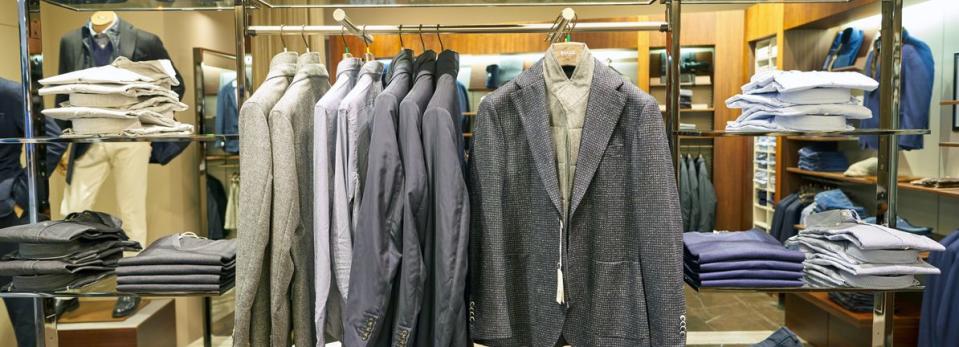Ross Stores (NASDAQ:ROST) Seems To Use Debt Quite Sensibly

Howard Marks put it nicely when he said that, rather than worrying about share price volatility, 'The possibility of permanent loss is the risk I worry about... and every practical investor I know worries about.' So it seems the smart money knows that debt - which is usually involved in bankruptcies - is a very important factor, when you assess how risky a company is. Importantly, Ross Stores, Inc. (NASDAQ:ROST) does carry debt. But the more important question is: how much risk is that debt creating?
What Risk Does Debt Bring?
Debt is a tool to help businesses grow, but if a business is incapable of paying off its lenders, then it exists at their mercy. In the worst case scenario, a company can go bankrupt if it cannot pay its creditors. However, a more frequent (but still costly) occurrence is where a company must issue shares at bargain-basement prices, permanently diluting shareholders, just to shore up its balance sheet. Having said that, the most common situation is where a company manages its debt reasonably well - and to its own advantage. The first thing to do when considering how much debt a business uses is to look at its cash and debt together.
View our latest analysis for Ross Stores
What Is Ross Stores's Debt?
The image below, which you can click on for greater detail, shows that Ross Stores had debt of US$312.6m at the end of May 2019, a reduction from US$397.1m over a year. However, its balance sheet shows it holds US$1.37b in cash, so it actually has US$1.05b net cash.
How Healthy Is Ross Stores's Balance Sheet?
Zooming in on the latest balance sheet data, we can see that Ross Stores had liabilities of US$2.59b due within 12 months and liabilities of US$3.19b due beyond that. Offsetting this, it had US$1.37b in cash and US$121.6m in receivables that were due within 12 months. So its liabilities outweigh the sum of its cash and (near-term) receivables by US$4.29b.
Since publicly traded Ross Stores shares are worth a very impressive total of US$39.2b, it seems unlikely that this level of liabilities would be a major threat. Having said that, it's clear that we should continue to monitor its balance sheet, lest it change for the worse. Despite its noteworthy liabilities, Ross Stores boasts net cash, so it's fair to say it does not have a heavy debt load!
On the other hand, Ross Stores saw its EBIT drop by 2.5% in the last twelve months. If earnings continue to decline at that rate the company may have increasing difficulty managing its debt load. There's no doubt that we learn most about debt from the balance sheet. But it is future earnings, more than anything, that will determine Ross Stores's ability to maintain a healthy balance sheet going forward. So if you're focused on the future you can check out this free report showing analyst profit forecasts.
Finally, a company can only pay off debt with cold hard cash, not accounting profits. Ross Stores may have net cash on the balance sheet, but it is still interesting to look at how well the business converts its earnings before interest and tax (EBIT) to free cash flow, because that will influence both its need for, and its capacity to manage debt. During the last three years, Ross Stores produced sturdy free cash flow equating to 71% of its EBIT, about what we'd expect. This cold hard cash means it can reduce its debt when it wants to.
Summing up
Although Ross Stores's balance sheet isn't particularly strong, due to the total liabilities, it is clearly positive to see that it has net cash of US$1.1b. The cherry on top was that in converted 71% of that EBIT to free cash flow, bringing in US$1.7b. So we don't have any problem with Ross Stores's use of debt. We'd be motivated to research the stock further if we found out that Ross Stores insiders have bought shares recently. If you would too, then you're in luck, since today we're sharing our list of reported insider transactions for free.
If, after all that, you're more interested in a fast growing company with a rock-solid balance sheet, then check out our list of net cash growth stocks without delay.
We aim to bring you long-term focused research analysis driven by fundamental data. Note that our analysis may not factor in the latest price-sensitive company announcements or qualitative material.
If you spot an error that warrants correction, please contact the editor at editorial-team@simplywallst.com. This article by Simply Wall St is general in nature. It does not constitute a recommendation to buy or sell any stock, and does not take account of your objectives, or your financial situation. Simply Wall St has no position in the stocks mentioned. Thank you for reading.

 Yahoo Finance
Yahoo Finance 
